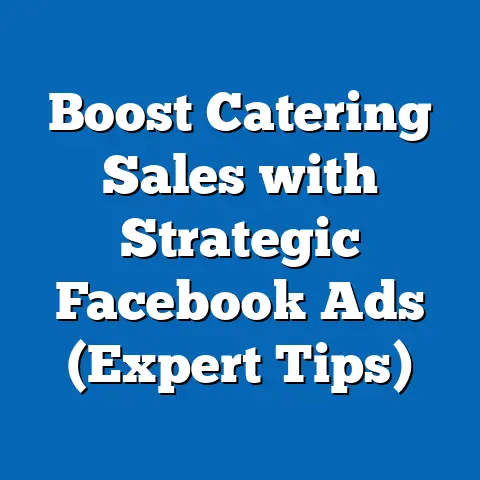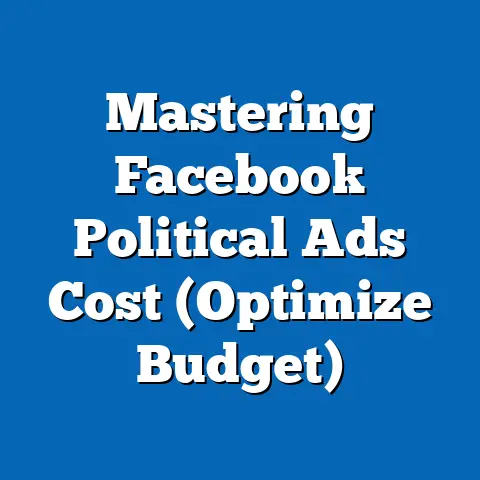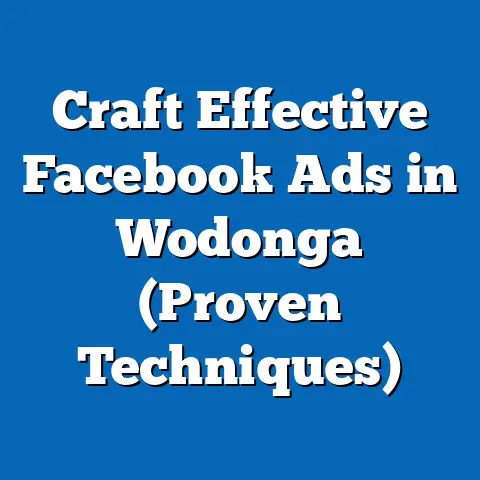Craft the Perfect Facebook Ad Template (Proven Strategies)
I’ve spent years helping businesses, from small startups to established brands, navigate the ever-changing world of Facebook advertising. One thing I’ve learned is that success isn’t just about luck; it’s about having a solid strategy and understanding the nuances of the platform. In this article, I’m going to share my insights on crafting the perfect Facebook ad template, specifically tailored for the flooring industry.
But before we dive into the nuts and bolts of Facebook ads, let’s take a moment to appreciate the art of flooring. Think about it: flooring is more than just a surface we walk on. It’s the foundation of a room, the canvas upon which we build our lives. A beautifully crafted hardwood floor can evoke a sense of warmth and tradition, while sleek tile can create a modern, minimalist aesthetic. Carpet can add a touch of luxury and comfort, and luxury vinyl offers a durable and stylish alternative. Just as a carefully chosen floor can transform a space, a well-crafted Facebook ad can transform your brand’s visibility and engagement.
Just as flooring plays a vital role in enhancing a space, a well-crafted Facebook ad is essential for enhancing a brand’s visibility and engagement online. Let’s get started!
Understanding the Facebook Advertising Landscape
Facebook is a behemoth in the advertising world, and for good reason. With billions of active users, it offers unparalleled reach and targeting capabilities. For businesses in the home improvement and flooring niche, Facebook is a goldmine.
- Reach: Facebook boasts over 2.9 billion monthly active users. That’s a massive audience you can potentially reach with your ads.
- Targeting: Facebook’s targeting options are incredibly granular. You can target users based on demographics, interests, behaviors, and even life events. This allows you to pinpoint your ideal customer with laser precision.
- Effectiveness: Studies have shown that Facebook ads are highly effective for driving traffic, generating leads, and increasing sales.
According to Statista, in the first quarter of 2024, Facebook’s ad revenue reached $36.46 billion U.S. dollars. This massive number underscores the platform’s dominance in the digital advertising space and highlights the potential for businesses to reach a vast audience.
The key to success on Facebook is understanding your audience and tailoring your ads to their specific needs and interests. Are you targeting homeowners looking to renovate their kitchens? Or are you targeting interior designers seeking high-end flooring options? Knowing your audience is the first step in crafting effective ads.
Facebook also offers a variety of ad formats, each with its own strengths and weaknesses.
- Carousel Ads: These allow you to showcase multiple products or features in a single ad. They’re perfect for highlighting different flooring styles or showcasing a complete room design.
- Video Ads: Video is incredibly engaging and can be used to demonstrate the installation process, highlight the durability of your flooring, or share customer testimonials.
- Slideshow Ads: Similar to video ads, slideshow ads use a series of images to tell a story. They’re a cost-effective alternative to video and can be just as effective.
- Image Ads: Simple yet powerful, image ads are a great way to showcase a single product or design.
Takeaway: Facebook is a powerful advertising platform with unparalleled reach and targeting capabilities. Understanding your audience and choosing the right ad format are crucial for success.
Key Elements of a Perfect Facebook Ad Template
Now that we’ve established the importance of Facebook advertising, let’s dive into the key elements of a winning ad template.
Compelling Headline
Your headline is the first thing people see, so it needs to grab their attention and entice them to learn more. A compelling headline should be:
- Relevant: It should clearly communicate what your ad is about.
- Benefit-Driven: It should highlight the benefits of your flooring products or services.
- Intriguing: It should pique the reader’s curiosity and make them want to click.
Here are some examples of effective headlines in the flooring industry:
- “Transform Your Home with Stunning New Floors”
- “Get the Look You Want with Our Wide Selection of Flooring”
- “Durable, Stylish, and Affordable Flooring Options”
- “Upgrade Your Home with Our Expert Flooring Installation Services”
I once worked with a flooring company that struggled to get clicks on their ads. We A/B tested several headlines, and the one that performed the best was “Finally! Flooring That’s Both Beautiful and Kid-Proof.” This headline resonated with their target audience of busy parents who wanted stylish flooring that could withstand the wear and tear of family life.
Engaging Visuals
A picture is worth a thousand words, and in the world of Facebook advertising, visuals are king. Your images or videos should be:
- High-Quality: Use professional photos or videos that showcase your flooring products in the best possible light.
- Relevant: Choose visuals that are relevant to your target audience and the message you’re trying to convey.
- Visually Appealing: Pay attention to composition, lighting, and color to create visually stunning images.
When showcasing flooring, it’s important to convey texture, color, and style. Use close-up shots to highlight the details of the flooring, and use wide shots to show how it looks in a room setting.
Clear and Concise Copy
Your ad copy should be clear, concise, and informative. It should communicate the unique selling proposition (USP) of your flooring products or services and tell the reader why they should choose you over the competition.
- Focus on Benefits: Highlight the benefits of your flooring, such as durability, style, affordability, and ease of maintenance.
- Use Strong Verbs: Use action verbs that encourage the reader to take action, such as “Discover,” “Transform,” “Upgrade,” and “Get.”
- Keep it Short and Sweet: People have short attention spans, so keep your ad copy concise and to the point.
Call to Action (CTA)
Your call to action (CTA) is the final piece of the puzzle. It tells the reader what you want them to do next. A strong CTA should be:
- Clear: It should be easy to understand and unambiguous.
- Action-Oriented: It should use action verbs that encourage the reader to take action.
- Compelling: It should create a sense of urgency or excitement.
Here are some examples of effective CTAs tailored to the flooring market:
- “Shop Now”
- “Get a Free Quote”
- “Learn More”
- “Visit Our Showroom”
- “Download Our Catalog”
Takeaway: A perfect Facebook ad template includes a compelling headline, engaging visuals, clear and concise copy, and a strong call to action.
Proven Strategies for Crafting Facebook Ads
Now that we’ve covered the key elements of a winning ad template, let’s explore some proven strategies for crafting Facebook ads that drive results.
A/B Testing
A/B testing, also known as split testing, is the process of testing different versions of your ad to see which one performs the best. You can A/B test headlines, images, ad copy, CTAs, and even targeting options.
The key to successful A/B testing is to test only one element at a time. This allows you to isolate the impact of each change and determine what’s working and what’s not.
For example, you could test two different headlines with the same image and ad copy. The headline that generates the most clicks and conversions is the winner.
When I first started running Facebook ads, I didn’t pay much attention to A/B testing. I just assumed that I knew what would resonate with my audience. I was wrong. Once I started A/B testing, I saw a significant improvement in my ad performance.
Utilizing Customer Testimonials
Social proof is a powerful marketing tool. People are more likely to trust recommendations from other customers than they are from the company itself.
Incorporating customer testimonials into your Facebook ads can build trust and credibility and increase your conversion rates.
There are several ways to integrate social proof into your ads:
- Quote a customer testimonial in your ad copy.
- Include a customer testimonial in your video ad.
- Create a carousel ad that features multiple customer testimonials.
Seasonal and Event-Based Campaigns
Tying your ads to seasonal trends or events can create urgency and relevance and boost your ad performance.
For example, you could run a “Spring Home Improvement Sale” or a “Holiday Flooring Upgrade” campaign.
When crafting seasonal or event-based campaigns, be sure to:
- Use relevant keywords and imagery.
- Highlight seasonal discounts and promotions.
- Create a sense of urgency by setting a deadline for the promotion.
Retargeting Strategies
Retargeting is the process of showing ads to users who have previously engaged with your brand or visited your website. This is a highly effective strategy for driving conversions because you’re targeting people who are already familiar with your company and your products.
There are several ways to retarget users on Facebook:
- Website Visitors: Show ads to people who have visited your website.
- Engagement: Show ads to people who have liked your Facebook page, watched your videos, or engaged with your posts.
- Email List: Upload your email list to Facebook and show ads to your subscribers.
Takeaway: Proven strategies for crafting Facebook ads include A/B testing, utilizing customer testimonials, running seasonal and event-based campaigns, and implementing retargeting strategies.
Analyzing and Optimizing Ad Performance
Creating a great Facebook ad template is only half the battle. You also need to track your ad performance and optimize your ads based on the data you collect.
Tracking Key Performance Indicators (KPIs)
Key performance indicators (KPIs) are metrics that you use to measure the success of your ad campaigns. Some of the most important KPIs for Facebook ads include:
- Click-Through Rate (CTR): The percentage of people who see your ad and click on it.
- Conversion Rate: The percentage of people who click on your ad and complete a desired action, such as making a purchase or filling out a form.
- Return on Ad Spend (ROAS): The amount of revenue you generate for every dollar you spend on advertising.
- Cost Per Click (CPC): The amount you pay each time someone clicks on your ad.
- Cost Per Acquisition (CPA): The amount you pay to acquire a new customer.
Navigating Facebook’s Ads Manager
Facebook’s Ads Manager is a powerful tool that allows you to track your ad performance, analyze your data, and optimize your campaigns.
The Ads Manager provides a wealth of information about your ads, including:
- Impressions: The number of times your ad has been shown.
- Reach: The number of unique people who have seen your ad.
- Clicks: The number of times people have clicked on your ad.
- Conversions: The number of people who have completed a desired action.
- Cost: The amount you’ve spent on your ads.
Optimizing Ads Based on Performance Data
Once you’ve collected enough data, you can start optimizing your ads based on their performance. This may involve:
- Adjusting Targeting: Refining your targeting options to reach a more relevant audience.
- Modifying Ad Copy: Rewriting your ad copy to make it more compelling.
- Testing New Creative Elements: Trying out different images, videos, and headlines.
- Optimizing Bids: Adjusting your bids to get the most bang for your buck.
I remember one campaign where my CTR was incredibly low. After analyzing the data, I realized that my targeting was too broad. I narrowed my targeting to focus on people who were specifically interested in home renovation and flooring, and my CTR skyrocketed.
Ongoing Analysis
Optimizing your Facebook ads is an ongoing process. You should continuously track your ad performance, analyze your data, and make adjustments as needed.
The key is to stay flexible and be willing to experiment. What works today may not work tomorrow, so it’s important to stay ahead of the curve and adapt to the ever-changing landscape of Facebook advertising.
Takeaway: Analyzing and optimizing ad performance is crucial for maximizing your ROI. Track key performance indicators, navigate Facebook’s Ads Manager, and make adjustments based on the data you collect.
Conclusion
Crafting the perfect Facebook ad template for the flooring niche is a blend of art and science. Just as a skilled designer carefully selects the right materials and colors to create a stunning floor, you need to carefully craft your ads to resonate with your target audience.
Remember, your Facebook ads are a reflection of your brand. They should be visually appealing, informative, and engaging. They should communicate the unique value proposition of your flooring products or services and tell the reader why they should choose you over the competition.
Like a well-crafted floor that enhances a space, effective Facebook advertising requires creativity, strategic thinking, and a willingness to adapt based on performance insights. By implementing these proven strategies, you can elevate your brand, connect with your target audience, and drive results that will make your business thrive.
So, go forth and create ads that are as beautiful and durable as the floors you sell. Your customers are waiting!






